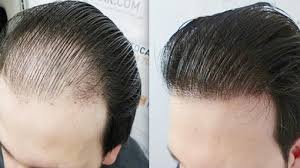Hair transplants are one of the most effective solutions for restoring natural hair in men and women. While the procedure offers permanent results, understanding the hair transplant recovery time in Dubai is crucial for achieving optimal outcomes and ensuring proper care during the healing process.
This guide will explore the recovery stages, post-operative care, factors affecting healing, and tips for a smooth recovery.
Understanding Hair Transplant Recovery
Recovery after a hair transplant involves a series of stages as the scalp heals and transplanted hair follicles begin to grow. Awareness of these stages helps manage expectations and ensures that patients follow proper care instructions for the best results.
Factors Affecting Recovery Time
-
Type of Procedure: FUE, FUT, or robotic-assisted transplants have slightly different recovery timelines
-
Patient Age: Younger patients may heal faster
-
Overall Health: Good nutrition, hydration, and absence of chronic illnesses support quicker recovery
-
Expertise of Specialist: Skilled surgeons reduce trauma to the scalp and improve healing time
-
Post-Operative Care: Following instructions impacts speed and quality of recovery
Recovery Timeline After Hair Transplant
First 1–3 Days: Immediate Post-Operative Stage
-
Mild redness, swelling, or tenderness in the scalp
-
Tiny scabs around transplanted follicles
-
Patients should avoid touching the scalp or applying unapproved products
Week 1: Early Healing Phase
-
Scabs may start to fall off naturally
-
Minor itching or numbness can occur
-
Patients can gently wash hair as per doctor’s instructions
-
Avoid strenuous physical activity to prevent damage
Weeks 2–4: Shedding Phase
-
Transplanted hair may shed naturally (shock loss)
-
This is normal and temporary; follicles remain healthy underneath
-
Hair shedding indicates the beginning of the new growth cycle
Months 1–3: Initial Hair Growth
-
Hair follicles start producing new strands
-
Hair may appear thin, fine, and soft
-
Scalp sensitivity gradually decreases
Months 3–6: Noticeable Hair Growth
-
Hair becomes denser and thicker
-
Growth pattern starts resembling natural hair
-
Continued care ensures stronger follicle health
Months 6–12: Full Recovery and Final Results
-
Maximum hair density and natural appearance achieved
-
Hair continues to grow like natural hair
-
Patients can resume regular hair care routines and styling
Tips to Accelerate Hair Transplant Recovery
-
Follow Post-Operative Instructions Carefully
-
Avoid scratching, rubbing, or picking scabs
-
Use recommended shampoos and medications
-
-
Protect Scalp from Sunlight
-
Wear a hat or apply sunscreen as advised
-
Direct sun exposure can slow healing
-
-
Maintain a Healthy Diet
-
Protein, vitamins, and minerals support hair growth
-
Hydration improves overall recovery
-
-
Avoid Smoking and Alcohol
-
Both can impair blood circulation and slow healing
-
-
Gentle Hair Care
-
Avoid harsh chemicals, heat styling, or tight hairstyles
-
Follow doctor’s advice on when to resume washing and styling
-
-
Regular Follow-Ups
-
Scheduled appointments ensure progress monitoring
-
Specialists can address concerns or complications promptly
-
Common Misconceptions About Recovery
Myth 1: Recovery Is Painful
Modern techniques like FUE and robotic-assisted transplants use local anesthesia, making the procedure comfortable. Mild discomfort post-surgery is normal and temporary.
Myth 2: Hair Grows Immediately
Full hair growth appears gradually over 6–12 months; initial shedding is part of the natural cycle.
Myth 3: All Patients Recover at the Same Rate
Recovery varies depending on age, health, procedure type, and adherence to post-care instructions.
Myth 4: Scarring Is Permanent
FUE leaves minimal, nearly invisible scars. FUT may leave a linear scar hidden by surrounding hair. Scars fade significantly with proper care.
Signs of Proper Healing
-
Reduction in redness and swelling within the first week
-
Natural shedding of transplanted hair followed by regrowth
-
Gradual hair thickness and density increase over months
-
No signs of infection or excessive pain
When to Contact a Specialist
-
Persistent swelling or redness beyond 1–2 weeks
-
Severe pain, bleeding, or infection
-
Unusual hair loss in non-transplanted areas
-
Any concerns about follicle survival or growth
Conclusion
Understanding hair transplant recovery time in Dubai helps patients manage expectations and ensures a smooth healing process. With proper care, following specialist instructions, and maintaining a healthy lifestyle, individuals can achieve natural, permanent hair restoration.
For professional consultation, safe procedures, and personalized hair transplant care, visit Tajmeels Clinic, where experts provide guidance and advanced treatments to ensure optimal recovery and excellent hair transplant results.








